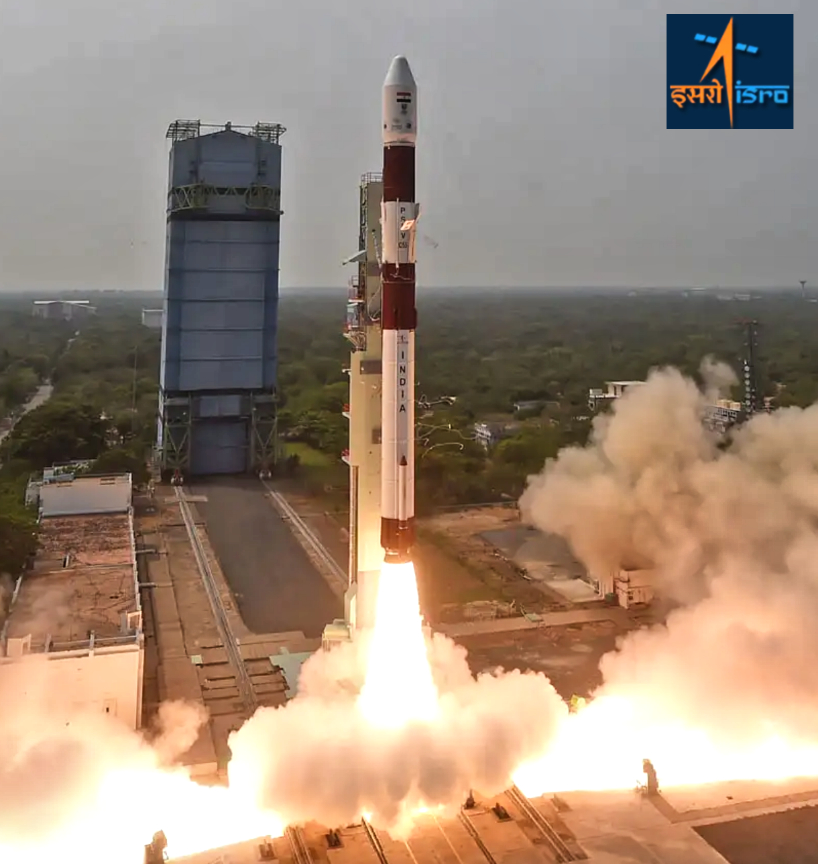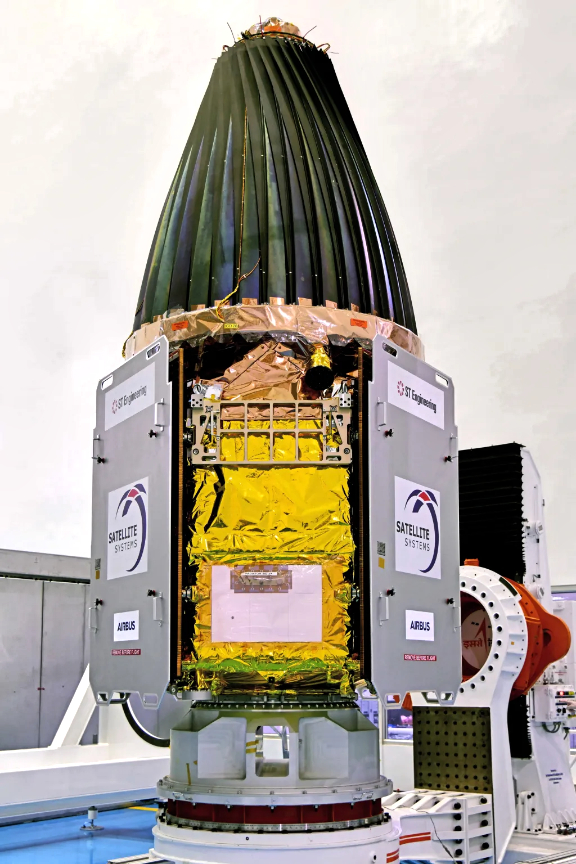
ST Engineering, on April 22, 2023, at 14:19 hours IST, announced the launch of the company’s first, polarimetric, synthetic aperture radar (PolSAR) satellite, TeLEOS-2. The 750 kg TeLEOS-2 was successfully launched by the Indian Space Research Organization (ISRO) at 4:50 p.m. (Singapore time) from the Satish Dhawan Space Centre (SHAR), Sriharikota, India, with smallsat co-passenger LUMELITE-4.

Developed in partnership with Singapore’s Defence Science and Technology Agency (on behalf of Government of Singapore), TeLEOS-2 features a made-in-Singapore SAR payload and is able to capture day and night images under all-weather conditions in high resolutions, with full polarimetry for a wider range of satellite data applications. This will enhance ST Engineering’s commercial satellite imagery solutions, providing multi-modal and high responsiveness features to company customers.

Operating in near-equatorial orbit (NEqO), at 10 degrees inclination, the satellite offers 1m high-resolution imagery, with an average of 14 passes a day, offering enhanced and wider coverage of many major shipping routes, as well as disaster-prone and forest-fire regions. This provides numerous opportunities for customers in applications such as disaster monitoring and management, environmental monitoring, natural resource exploration and management, climate change and weather studies.
Notably, the PolSAR payload allows the satellite to penetrate cloud and precipitation and capture both day and night images under all-weather conditions. This also allows for improved monitoring, mapping and quantification, as well as multiparameter details of different surfaces.
“The development and launch of TeLEOS-2 represent another milestone in our journey in building up indigenous capabilities for the expansion and commercialisation of our satellite technologies. It will further propel the growth of Singapore’s space industry and strengthen ST Engineering’s position in the global space market. We continue to deepen our capabilities and expand our service offerings for key commercial applications including maritime, agriculture, environment and disaster monitoring and management.” — Low Jin Phang, President, Digital Systems, ST Engineering.
“The Office for Space Technology & Industry (OSTIn) congratulates DSTA and ST Engineering on the successful launch of TeLEOS-2. TeLEOS-2’s ability to capture images under all weather conditions, during both nighttime and daytime, at an average of 14 passes a day, unlocks multiple possibilities for commercial applications. This includes hotspot monitoring, oil spill detection, and air & maritime search & rescue operations. As DSTA and ST Engineering push the frontiers in the development of space technology here in Singapore, we look forward to seeing how these efforts will strengthen our space ecosystem.” – David Tan, Executive Director, OSTIn.
ISRO notes…
The ISRO‘s PSLV-C55/TeLEOS-2 mission launched successfully on April 22, 2023, at 14:19 hours IST from SDSC-SHAR, Sriharikota.
This is a dedicated commercial mission through NSIL with TeLEOS-2 as primary satellite and Lumelite-4 as a co-passenger satellite. The satellites weigh about 741 kg and 16 kg, respectively. Both belong to Singapore and they are intended to be launched into an eastward, low inclination orbit.
TeLEOS-2
The TeLEOS-2 satellite is developed under a partnership between DSTA (representing the Government of Singapore) and ST Engineering. Once deployed and operational, it will be used to support the satellite imagery requirements of various agencies within the Government of Singapore. TeLEOS-2 carries a Synthetic Aperture Radar (SAR) payload. TeLEOS-2 will be able to provide all-weather day and night coverage, and capable of imaging at 1m full-polarimetric resolution.
LUMILITE-4
The LUMELITE-4 satellite is co-developed by the Institute for Infocomm Research (I2R) of A*STAR and Satellite Technology and Research Centre (STAR) of the National University of Singapore. LUMELITE4 is an advanced 12U satellite developed for the technological demonstration of the High-Performance Space-borne VHF Data Exchange System (VDES). Using the VDES communication payload developed by I2R and STAR’s scalable satellite bus platform, it aims to augment Singapore’s e-navigation maritime safety and benefit the global shipping community.
POEM-2
The mission has the PSLV Orbital Experimental Module (POEM) where the spent PS4 stage of the launch vehicle will be used as an orbital platform to carryout scientific experiments through non-separating payloads. The payloads belong to ISRO/Department of Space, Bellatrix, Dhruva Space, and Indian Institute of Astrophysics.
